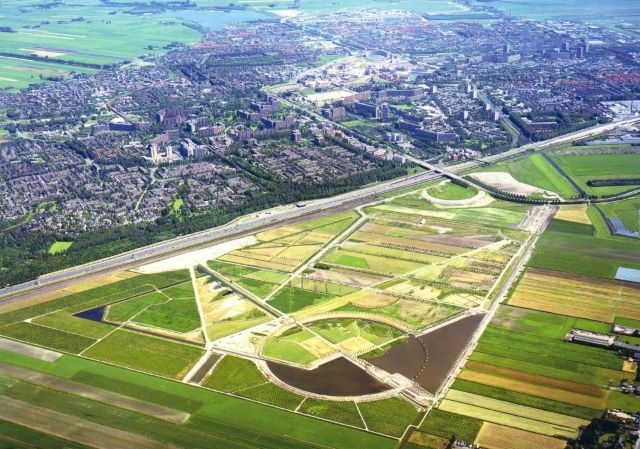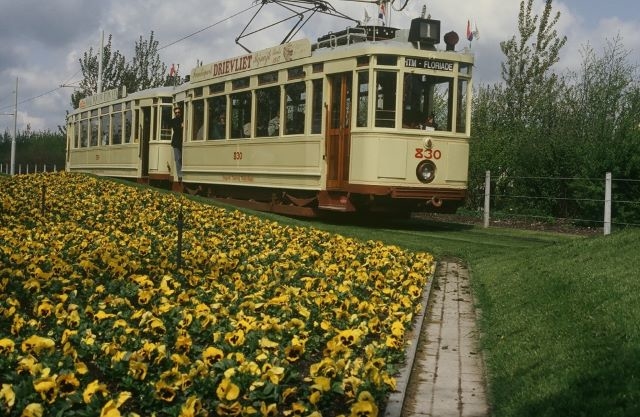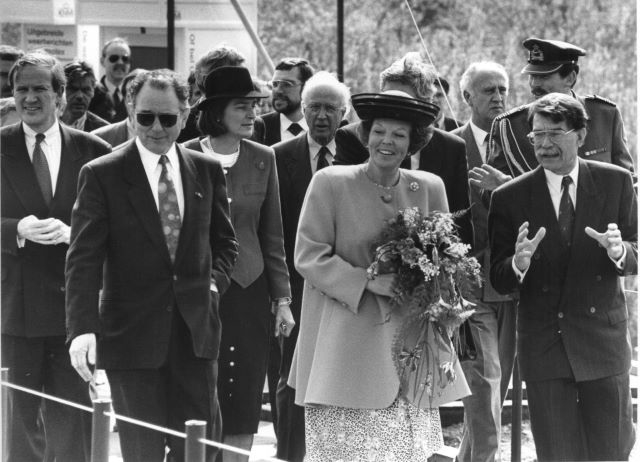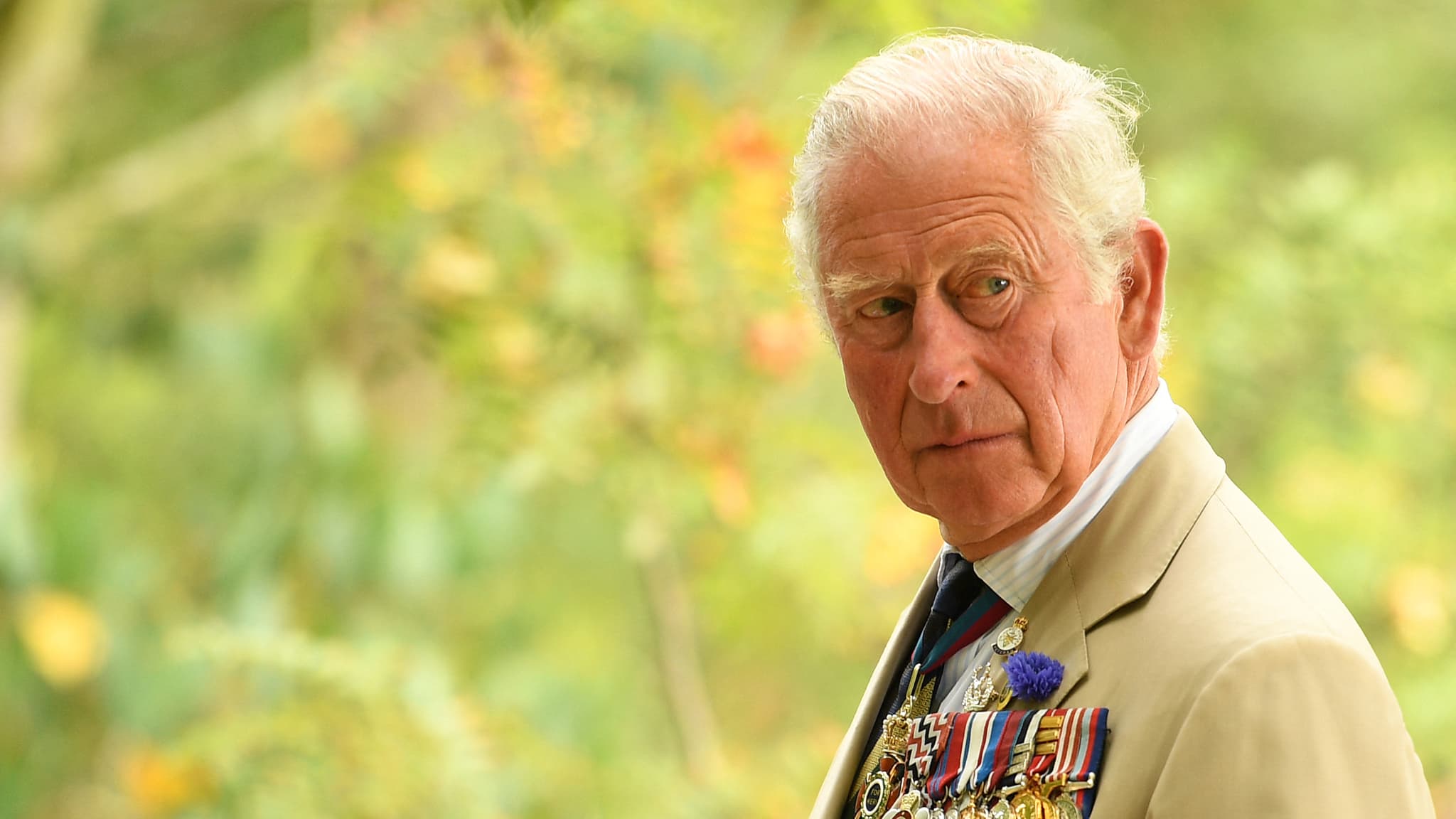The history of Zoetermeer goes back a thousand years in time. In a series of stories we take you on a journey through these thousand years of history. Starting with the creation of Zoetermeerse Meer and ending with the construction of Oosterheem. This time: Floriade.
In 1992 the fourth edition of the World Horticultural Exhibition Floriade (The Hague – Zoetermeer) was held in Zoetermeer and organized together with the municipality of The Hague. In 1960, the first place took place in Het Park in Rotterdam and part of that Floriade was the Euromast, which opened in 1960. Twelve years later it was organized for the first time in Amsterdam, in the Amstelpark, and since then it has been held every ten years. In 1982 it was reorganized at the Gaasperpark in Amsterdam. Preparations for the Floriade in Gaasperpark were still underway when the idea of bringing the 1992 Floriade to the Hague region was already being discussed.
The Floriade is assigned and coordinated by the Dutch Horticultural Council. The objectives of the Horticultural Council, established in 1908, are to strengthen the image of Dutch horticulture and to promote exports. The most important medium they use for this is Floriade. At that time, this Horticultural Council established a series of requirements for the choice of the location of the Floriade. For example, as many potential visitors as possible had to live within a 50-60 kilometer radius and the site was preferably located in or near a large city. There had to be a good connection for public and private transport and the site had to have an area of about 70 hectares. In 1984, the Horticultural Council decided to install Floriade in Zoetermeer, in the Rokkeveen district.
Master plan
Even before the Horticultural Council made its decision, intensive consultations had already taken place between the Floriade design group and the Zoetermeer Urban Development Department. A master plan was developed for the exhibit area. After Floriade, the Rokkeveen-West residential area would be built on the site. That is why the concept of ‘residential area under development’ was included in the master plan and the dimensions of the avenue trees, windbreaks and roads were derived from the layout of the single-family home plot. It was also agreed that the original polder landscape should be recognizable in the design. A triangular shape was chosen, through which the characteristic weft pattern of the polder was woven. The triangular shape was a modern reference to the Ganzevoet, a classic form of French garden architecture. Traditionally, the Goosefoot consists of three ‘toes’, avenues or visual axes, which meet at a central point. In Floriade’s design, the avenues consisted of three axes that converged on the Ganzevoetplein.
The northern axis of the Ganzevoet consisted of a one and a half kilometer road. On the south side of this axis was a flower walker where pansies bloomed in spring and then annuals. On the north side there was a flower corridor with more than 25 different types of wildflowers, such as poppies and sunflowers. Along the entire axis was the route of an old Hague tram. The central axis consisted of a 3.6 meter high dike with a track and a caterpillar-shaped monorail. Through this axis, visitors to the Ganzevoetplein could climb a 76-meter-high tower that offered a view of the entire exhibition area. The southern axis consisted of a straight, dead waterway with three follies on the side. A madness is a structure that only has a decorative or artistic purpose in the garden. They were especially popular in the late 18th and early 19th centuries. The waterway ended in the southwestern part of the triangular shape at Floraplas.
Seven thematic areas
In addition, seven subject areas were developed in the master plan. These were 1) Commerce, Transportation and Distribution, 2) Production and Energy, 3) Consumer, 4) Environment, 5) Future and Science, 6) World and 7) Recreation. The world theme area housed one of the most important parts of Floriade, the gardens of the countries participating in the World Horticultural Exhibition. Participating countries were Belgium, France, United Kingdom, Germany, Austria, Italy, Hungary, Poland, Russia / Soviet Union, Thailand, Indonesia and Japan.
In the spring of 1986, the Brakx Minister of Agriculture and Fisheries planted the first tree, an elm, and Queen Beatrix inaugurated the Floriade on April 9, 1992. Over a period of six months, 3.2 million people visited the exhibition area of 68 hectares. After Floriade, the construction of the northern part began almost immediately. The tree-lined avenues, including in Woudlaan, have been kept intact and the southern and western parts of the neighborhood have remained green. These parts also contain preserved parts of the Floriade, the Folly, the Floraplas, the rosarium, the polder garden, and various works of art. The dike on which the monorail rails were mounted during the Floriade has also been preserved and now runs through the residential area.
If you want to know more about this story, visit sachavanvlaardingen.wordpress.com.
Text: Sacha van Vlaardingen
Photo 1: Flags of the Floriade; Photo: City Archives Municipality of Zoetermeer, photographer: Hoogland, A. (Aat)
Photo 2: 1988 aerial photo of the area where the Floriade will be built in 1992; Photo: City Archives Municipality of Zoetermeer, photo: Delta-Phot
Photo 3: The Hague Tram; Photo: City Archives Municipality of Zoetermeer, photographer: Hoogland, A. (Aat)
Photo 4: Queen Beatrix in Zoetermeer to open the Floriade. Commissioner of the queen of the extreme left in South Holland S. Patijn; Photo: City Archives Municipality of Zoetermeer, Oud Soetermeer Historical Society
The full Zoetermeer story series can be found here: news-2021 / history

“Troublemaker. Typical travel fan. Food fanatic. Award-winning student. Organizer. Entrepreneur. Bacon specialist.”









